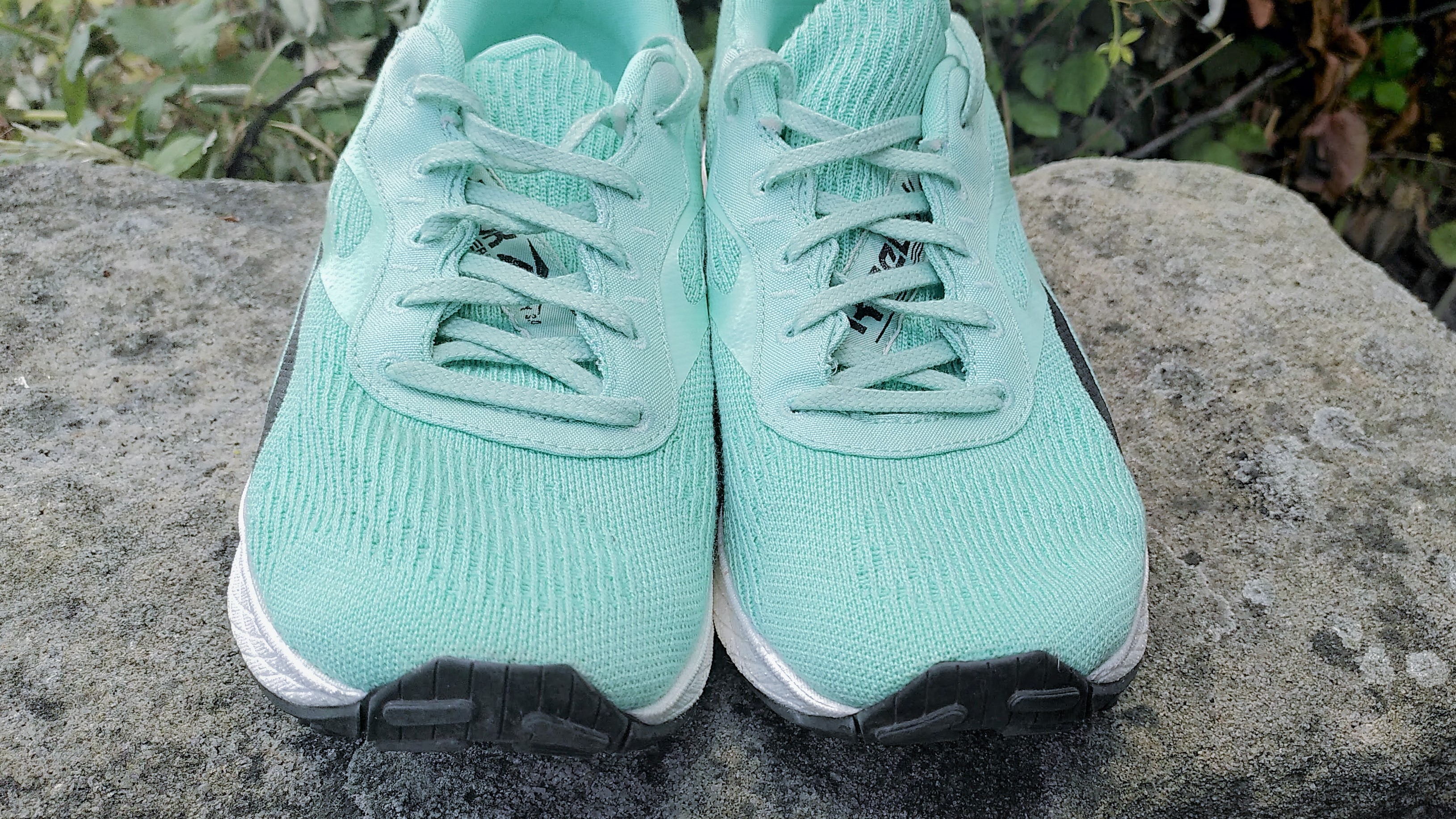Advnture Verdict
The Reebok Floatride Energy Grow is a versatile neutral road running shoe that's ideal for mid- and long-distance training sessions, particularly if you prefer a flexible shoe that allows for plenty of movement. Despite the use of 50% sustainable materials (always welcome to reduce use of virgin plastic) it's neither heavy nor sweaty, even when the temperature rises, and if that's not enough it's also surprisingly cheap.
Pros
- +
Versatile design
- +
50% plant-based materials
- +
Surprisingly durable
Cons
- -
Not springy enough for sprints
- -
Sizes come up a little small
You can trust Advnture
Reebok Floatride Energy Grow first impressions
The Reebok Floatride Energy Grow is a versatile road running shoe with impressive green credentials and a surprisingly affordable price tag. It's made using at least 50% plant-based materials, and you can now pick up a pair for much less than the already modest list price of $120 / £90 . In fact, they're some of the cheapest 'green' road shoes around right now.
• List price: $120 / £90
• Weight (per shoe): 229g / 8.07oz (US men's 9)
• Drop: 9mm
• Materials: Lyocell upper, Floatride Energy foam, carbon rubber outsole
• Colors: Off-white, mint green
• Compatibility: Long and mid-distance road running
Unlike some sustainably made running shoes (like the Allbirds Tree Flyer) that have a distinctly 'home spun' look, the Energy Grow is virtually indistinguishable from a conventional shoe. In fact, it looks very similar to the Reebok Floatride Energy 4 at first glance, with a retro silhouette and a choice of mint green or off-white color schemes. The off-white colorway is particularly versatile, and works just as well with casual outfits as it does for training sessions.
The most obvious difference is the materials. Rather than the gossamer-thin perforated material of the Energy 4, the Grow has a dual-layer upper made from wood pulp-based Lyocell. This is a little thicker, but still breathable and durable. It's not quite as breezy as modern 3D-printed mesh, but I was impressed by how well it performed on hot June days,

The collar and tongue are lightly padded, but I never experienced rubbing even during multi-hour training sessions. The flat, grippy laces lend themselves well to a good secure fit (they tie much more firmly than the slightly slippery laces of the Floatride Energy 4). You can also create a heel lock, which isn't possible with the Tree Flyer.
The tongue of the Reebok Floatride Energy Grow is partly gusseted, which helps keep out stones and grit, but this is strictly a road shoe. While it performs well on pavements, even in wet conditions, I wouldn't want to subject the soft upper to the rigors of rough and rocky trails.

Reebok Floatride Energy Grow on the road
It's quite a flexible shoe, both laterally and medially, which won't suit those who prefer something springy. The foam used in the shoe's midsole (derived from castor bean oil) isn't quite as light or bouncy as a more conventional material, so you might want to opt for something springier for sprint sessions and race days.
However, for everyday training runs, the Floatride Energy Grow shines. Its flexibility will work well if you have a neutral gait, and the segmented design allows for some twisting motions so you can feel the road beneath you.
All the latest inspiration, tips and guides to help you plan your next Advnture!

When I first tested the Floatride Energy Grow for Advnture's sister site TechRadar, I was surprised that there seemed to be a little fraying around the tongue where the material isn't serged, but I needn't have worried. The tongue didn't degrade any further even after several hundred miles, and when the upper eventually failed I bought a new pair to replace them – I enjoyed them that much.
The only caveat to bear in mind is that, as with the Floatride Energy 4, the sizing seems to come up slightly small. If possible, it might be wise to order half a size up to ensure you've got plenty of room in the toe box. You probably won't wind up with bruised toenails thanks to the soft Lyocell upper, but you may appreciate the extra space on long, hot runs.

Cat is the editor of Advnture, She’s been a journalist for 15 years, and was fitness and wellbeing editor on TechRadar before joining the Advnture team in 2022. She’s a UK Athletics qualified run leader, and in her spare time enjoys nothing more than lacing up her shoes and hitting the roads and trails (the muddier, the better), usually wearing at least two sports watches.

